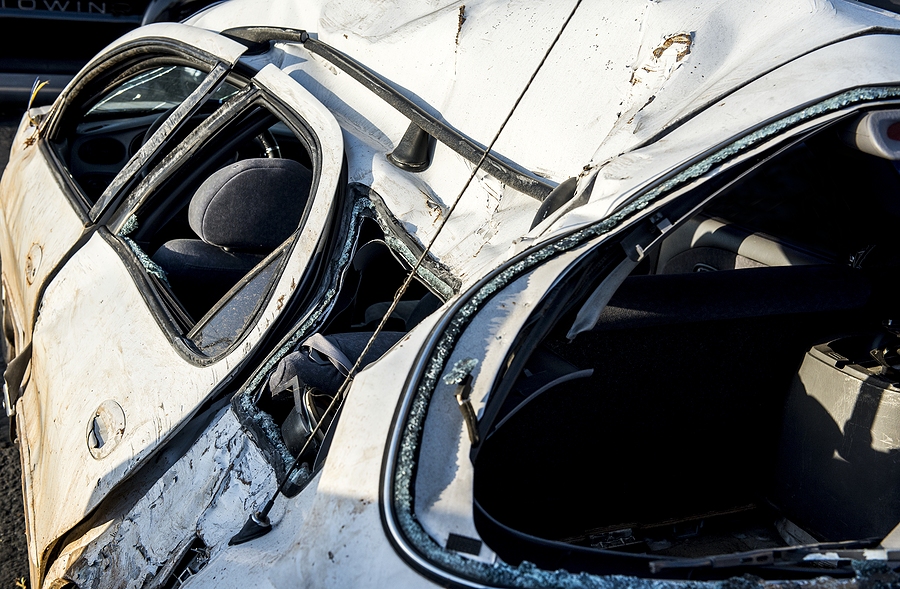Even when manufacturers add crumple zones and strengthened steel in the sides of vehicles, broadside collisions can kill the occupants of a vehicle. This is especially true in a high-speed collision. Even if you have never been in a broadside wreck, you might have a tinge of anxiety while going through an intersection while you wonder if someone is going to run a light or a stop sign.
Avoiding broadside collisions is not always possible, but with more information about this type of wreck, you can reduce the risk of getting T-boned. If you suffer from injuries because someone T-boned you, contact a Bronx car accident lawyer for a free consultation.
What Is a Broadside Collision?

Broadside collisions are also known as T-bone wrecks. In a nutshell, it is when someone drives into the side of your car. A broadside collision, even at lower speeds, can push you across lanes of traffic, causing more damage than if the other driver just hit you.
Locations of Broadside Collisions
As you can probably guess, the most common location for broadside collisions is at intersections. T-intersections, four-way intersections, and those with several roads meeting at the same intersection are all common points for T-bone wrecks.
The Insurance Institute for Highway Safety (IIHS) found that 23 percent of the occupants of passenger vehicles died in broadside crashes in a recent year. Fifteen percent of those were single vehicle wrecks, such as someone sliding into a stationary object, and 30 percent of the broadside crash deaths were those in accidents involving multiple vehicles.
A driver could suffer a broadside hit in other locations, including by someone pulling out of a driveway or by someone spinning out of control with forward or reverse motion going across lanes. Broadside collisions can also happen in parking lots, or even on private roads, such as those in parks or campgrounds.
Why Intersections Are “Planned Points of Conflict”
The Federal Highway Administration (FHA) refers to intersections as planned points of conflict. From local streets to major highway systems, intersections along these roads always have a lot going on, especially in urban areas. In addition to people driving through an intersection, people also walk, ride bicycles, or even use wheelchairs to cross intersections.
Drivers need eyes in the back and sides of their heads while going through a busy intersection. You have vehicles coming at you and turning into your path, plus you have pedestrians, bicyclists, and those in wheelchairs, on scooters, and other ambulatory implements going through the intersection.
The FHA also stated that about half of traffic injuries and about one-quarter of traffic fatalities happen at intersections. Government entities that create and maintain public roads (including the intersections in these roads) could re-engineer the intersection to help mitigate crashes by adding additional turning lanes with lights, or creating roundabouts.
Higher Risk Intersections
Some intersections are at a higher risk than others. Even those relatively close to each other in urban areas can have more crashes than their neighboring intersections.
Some of the high-risk factors to look out for when approaching intersections include:
- The location of the intersection. Is it urban or rural?
- How many roads meet at the intersection? The more roads that meet, the more chances you have of getting into an accident.
- How many lanes in each of the roads? You might think that more lanes mean more accidents, but roads with turning lanes and lights for the turning lanes help mitigate the chances of wrecks.
- How much pedestrian and bicyclist traffic goes through the intersection? It is harder to see pedestrians and bicyclists. A person turning into a pedestrian might see the pedestrian at the last minute and turn away from that person, thus hitting another vehicle.
- The number of traffic control signals for the intersection, including for turning lanes.
- The length of time a traffic control allows traffic movement.
- Whether one or more traffic control signals (including signs) are confusing to drivers, pedestrians, and bicyclists.
- The visibility of traffic control signals. This is more often a problem with signs at an intersection, particularly if the area around the traffic control sign is overgrown.
When approaching an intersection, especially a strange intersection, look for signs in addition to lights. Look ahead into the intersection and always proceed cautiously, even if you have a green light. Before entering an intersection, glance down other roads crossing your path to ensure that all other vehicles, pedestrians, and/or bicyclists are not entering your path.
Mitigating Injuries and Fatalities in a Side Crash
Sometimes, regardless of what you do, you cannot avoid a side crash because another driver is speeding through an intersection or gets pushed into you. You could mitigate injuries and even death by choosing your next vehicle carefully.
When it is time for you to buy a new vehicle, research your purchase carefully, especially the safety features. The IIHS has been testing side crashes in vehicles since 2003. Look for a vehicle with high side crash test results.
The NHTSA also tests for broadside crashes and other crashes. It also rates vehicles on various safety factors and accident prevention factors. You can mitigate the risk of injury or death in a broadside crash by purchasing a vehicle with reinforced steel beams in the sides and high ratings for side barrier and side pole crash tests.
Contact a Car Accident Lawyer Near You After a Broadside Collision
If you do get into a broadside collision, a car accident lawyer could help you through the process of settling or litigating your case. Paying out claims can affect an insurance company’s bottom line, so they might try to deny your claim or make an offer that might not even cover medical expenses. Since an insurance company may try to twist your words to deny your claim, consider contacting an attorney to deal with it.



